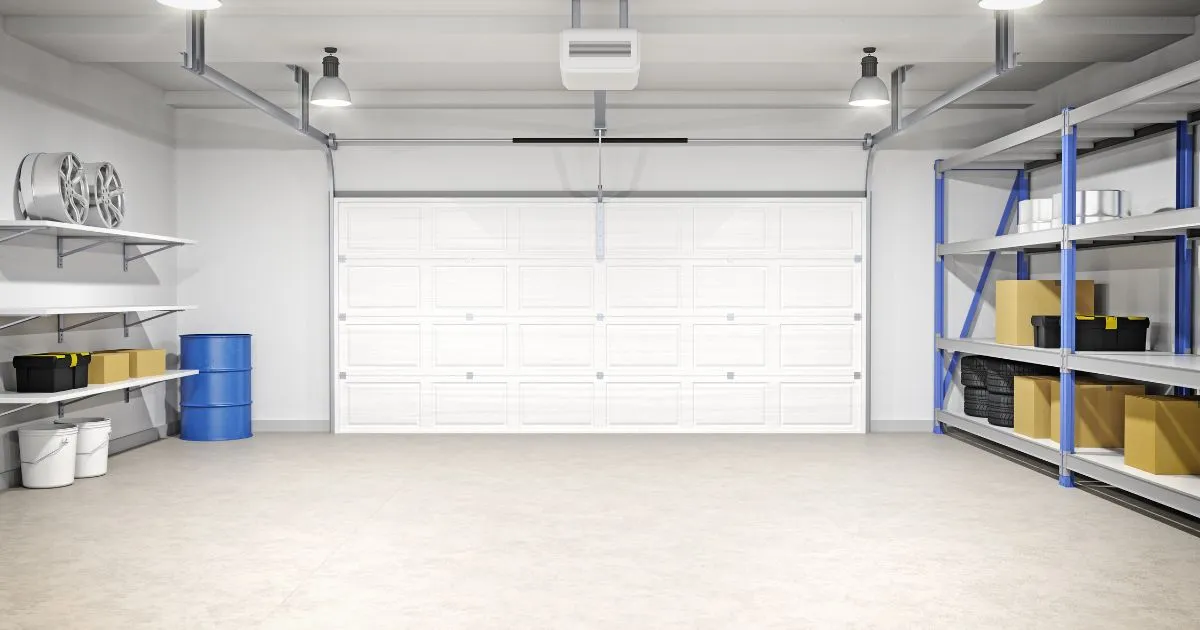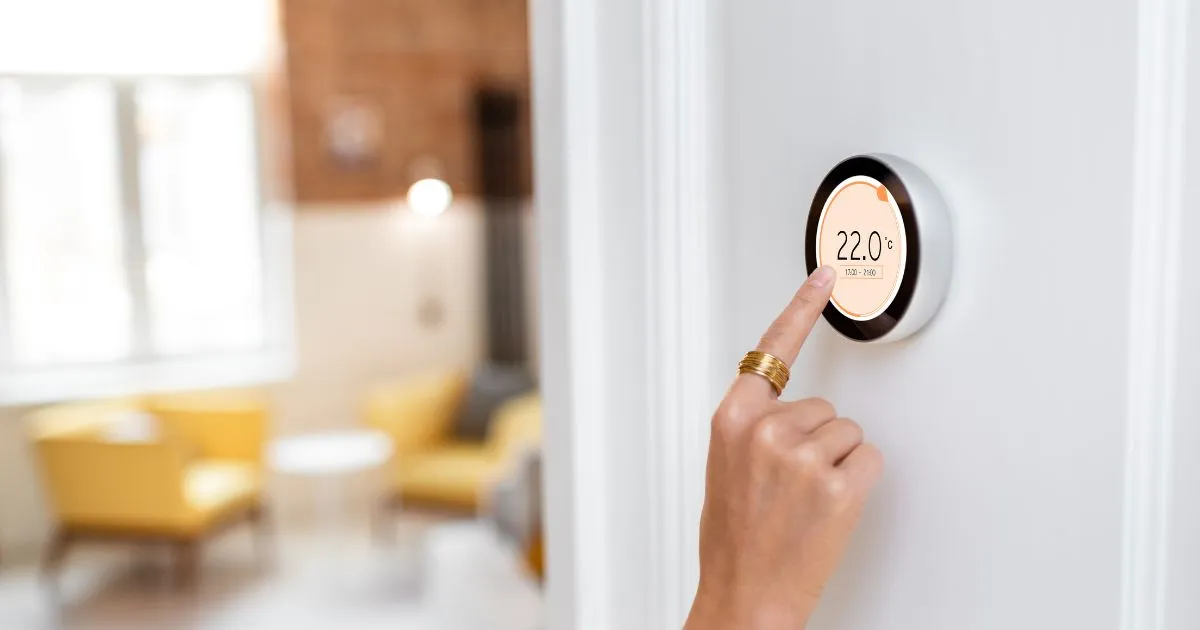Smart Climate Control for Your Home and Garage: Why Temperature Management Matters More Than You Think
Most homeowners focus on keeping their living spaces comfortable, but there's one area that often gets overlooked: the garage. Whether you use it for parking, storage, or as a workshop, your garage's temperature can significantly impact your home's overall energy efficiency, your vehicle's condition, and even your utility bills. Understanding how to properly manage climate control throughout your entire property, including those transitional spaces like garages and carports, isn't just about comfort. It's about protecting your investments and creating a more livable environment year-round.
Australia's climate presents unique challenges. Melbourne's weather, in particular, can swing from scorching summer days to chilly winter mornings, often within the same week. These temperature fluctuations don't just affect your living room; they impact every space in your home, including attached garages, converted spaces, and parking areas. The good news? Modern climate control solutions have evolved to address these challenges more effectively and efficiently than ever before.
The Hidden Impact of Garage Temperature on Your Home
Your garage isn't as separate from your home as you might think. If you have an attached garage, the temperature inside directly affects the rooms adjacent to it. During summer, a garage that heats up to 40+ degrees becomes a thermal mass that radiates warmth into your home, forcing your air conditioning to work harder. In winter, a freezing garage pulls heat away from connected rooms, driving up heating costs.
Beyond energy efficiency, temperature extremes in your garage can damage stored items, affect your vehicle's performance, and make the space unusable for anything beyond basic parking. Paint cans can freeze or separate. Electronics deteriorate faster. Wooden furniture warps. Even your car suffers. Extreme heat accelerates battery fluid evaporation and can damage interior materials, while cold temperatures make fluids thicker and batteries less efficient.
Many homeowners also use their garages as multi-purpose spaces: workshops, home gyms, storage areas, or even converted living spaces. Without proper climate control, these areas remain uncomfortable and impractical for most of the year. You've invested in this space, so why not make it fully functional?
The solution starts with understanding that your garage deserves the same climate control consideration as any other part of your home. This doesn't necessarily mean installing full heating and cooling systems in every garage, but it does mean thinking strategically about insulation, ventilation, and temperature management options that suit your specific needs and budget.

Choosing the Right Climate Control Solutions for Melbourne Homes
Melbourne's famously unpredictable weather demands climate control systems that can handle both heating and cooling efficiently. While many homeowners address living areas first, the smartest approach considers the entire property as a connected system. This includes thinking about how your garage, outdoor parking areas, and transitional spaces integrate with your main residence.
When evaluating climate control options, consider systems that offer flexibility and efficiency. Modern split systems, ducted solutions, and zoned climate control allow you to heat or cool specific areas as needed rather than treating your entire home as a single unit. This approach makes particular sense for homes with attached garages or converted spaces where usage patterns differ from main living areas.
For comprehensive temperature management, professional installation and ongoing service matter enormously. Working with experienced specialists in cooling and heating melbourne ensures your systems are properly sized, efficiently installed, and maintained for optimal performance. These professionals understand local climate challenges and can recommend solutions that balance comfort with running costs, particularly important given Melbourne's varied seasonal demands.
The right system depends on your home's layout, your budget, and how you use different spaces. Ducted systems work beautifully for whole-home comfort but might be overkill for a detached garage. Split systems offer targeted control and can be added incrementally as needs change. Evaporative cooling provides cost-effective summer comfort in Melbourne's relatively dry climate, though it's less effective during humid periods.
Don't overlook the importance of insulation and sealing as foundational elements of climate control. Even the most efficient heating and cooling system struggles if your garage door leaks air, your walls lack insulation, or gaps allow outdoor temperatures to infiltrate. Addressing these basics first maximizes the effectiveness of any climate control investment.
Energy efficiency should factor heavily into your decision-making. Modern systems use significantly less power than older models, and many qualify for rebates or incentives. Over time, the energy savings from an efficient system can offset the initial investment, particularly if you're replacing an older, inefficient unit.
The Rise of Hydronic Heating: A Sophisticated Approach to Warmth
While air conditioning handles Melbourne's summer heat effectively, winter heating presents different considerations. Traditional heating methods like ducted gas or reverse-cycle air conditioning work well, but they're not the only options. Increasingly, homeowners are discovering the benefits of hydronic heating, a system that uses hot water to deliver consistent, comfortable warmth throughout a space.
Hydronic heating works by circulating heated water through a network of pipes connected to radiator panels or underfloor systems. The water is heated by a central boiler, which can run on gas, electricity, or even solar power. This heated water then radiates warmth into the room, creating an even temperature distribution without the air movement and noise associated with forced-air systems.
The appeal of hydronic heating extends beyond comfort. These systems operate silently, don't circulate dust or allergens, and provide a type of warmth that many people find more pleasant than forced air. The radiant heat warms objects and people directly rather than just heating the air, which means you feel comfortable at lower thermostat settings. This translates to energy savings over time.
For spaces like converted garages, home offices, or extensions, hydronic heating offers particular advantages. Hydronic heater panels come in various sizes and styles, from compact units suitable for smaller rooms to larger panels for open-plan spaces. Modern designs have evolved far beyond the chunky radiators of the past. Today's panels can be sleek, wall-mounted features that complement contemporary interiors while delivering efficient, consistent heat.
Installation flexibility makes hydronic systems attractive for renovations and additions. Unlike ducted systems that require extensive ceiling or floor space for ductwork, hydronic pipes are relatively small and can often be retrofitted into existing structures with minimal disruption. For a garage conversion or extension, this can be a decisive advantage.
The initial cost of hydronic heating typically exceeds that of basic heating options, but long-term benefits often justify the investment. The system's efficiency, particularly when paired with a modern condensing boiler, keeps running costs competitive. The comfort factor is harder to quantify but shouldn't be underestimated. Many people who've experienced hydronic heating strongly prefer it to alternatives.
Hydronic systems also integrate beautifully with other heating solutions. You might use hydronic panels in main living areas while opting for different solutions in bedrooms or occasional-use spaces. This flexibility allows you to create a customized climate control strategy that matches how you actually use your home.

Practical Strategies for Managing Temperature in Parking and Storage Spaces
Beyond major heating and cooling installations, several practical strategies can improve temperature management in garages and parking areas. These approaches range from simple fixes to more involved improvements, all contributing to a more comfortable and functional space.
Start with insulation. Garage doors, in particular, lose and gain heat rapidly. Insulated garage doors make a noticeable difference in temperature stability. Wall and ceiling insulation matters too, especially for attached garages. The investment is modest compared to the energy savings and comfort improvements.
Ventilation plays a dual role. In summer, proper ventilation prevents heat buildup that can make garages unbearably hot. Whirlybirds, exhaust fans, or simply leaving doors partially open when safe to do so helps. In winter, controlled ventilation prevents condensation and moisture buildup without excessively cooling the space. Balance is key.
Portable heating and cooling options provide flexibility for garages and spaces that don't justify permanent installations. Portable air conditioners, space heaters, and radiant heaters let you add comfort when you're using the space without the expense of permanent systems. Just ensure any portable heating devices are appropriate for the space and used safely.
Consider how you use the space when planning improvements. A garage used primarily for parking might need minimal climate control, just enough to prevent temperature extremes that damage vehicles or stored items. A workshop or home gym demands more comfort. A converted living space requires full climate control comparable to other rooms in your home.
Timing matters for climate control operation. Pre-cooling or pre-heating spaces before you use them, rather than trying to maintain constant temperatures, saves energy. Smart thermostats and timers make this approach practical and convenient.
Shade and reflective surfaces reduce summer heat gain significantly. If your garage or carport receives direct sun, strategic shading through awnings, trees, or pergolas prevents the space from becoming a heat trap. Light-colored or reflective roofing materials help too.
Energy Efficiency and Long-Term Value
Every climate control decision has long-term implications for energy costs and property value. Efficient systems, proper insulation, and smart usage patterns don't just improve comfort. They reduce utility bills and make your home more attractive to future buyers.
Energy ratings matter when selecting systems. In Australia, star ratings provide guidance on efficiency. Higher-rated systems cost more initially but deliver ongoing savings. Calculate payback periods realistically, factoring in both energy costs and available rebates.
Regular maintenance keeps systems running efficiently. Annual service visits identify minor issues before they become expensive problems and ensure systems operate at peak efficiency. This matters particularly for heating systems, which can lose efficiency gradually as components wear or dust accumulates.
Smart home integration offers new possibilities for optimizing energy use. Systems that learn your patterns, respond to weather forecasts, and allow remote control let you maintain comfort while minimizing waste. The technology has matured to the point where it's reliable and user-friendly.
Consider future flexibility when making climate control investments. Systems that can expand or adapt as your needs change offer better long-term value than rigid solutions. This particularly applies to homes where you might eventually convert garage space, add extensions, or modify how you use different areas.
Creating Comfortable Spaces Throughout Your Property
Climate control shouldn't stop at your living room. Your entire property, including garages, workshops, and outdoor areas, deserves consideration. By thinking holistically about temperature management, you create a more comfortable, efficient, and valuable home.
The key is matching solutions to needs. Not every space requires the same level of climate control, and trying to maintain identical temperatures everywhere wastes energy. Instead, create zones that reflect how you actually use different areas. Keep main living spaces consistently comfortable. Heat or cool secondary spaces as needed. Manage garages and storage areas to prevent extremes without attempting to match indoor temperatures.
Professional advice helps navigate the options. Climate control specialists can assess your entire property, recommend solutions that work together effectively, and identify opportunities you might miss. Their experience with local conditions and various system types proves invaluable.
Start with the changes that deliver the biggest impact. Often, this means addressing insulation and sealing before adding heating or cooling capacity. A well-insulated garage with a quality door might need minimal additional climate control. Poor insulation makes even the best systems work harder and cost more to run.
Remember that comfort is personal. What works for one household might not suit another. Pay attention to how you actually use spaces rather than assuming conventional solutions are always best. The goal is creating an environment that works for your lifestyle, your budget, and your property.
As Melbourne's climate continues to challenge homeowners with its variability, smart climate control becomes increasingly important. By extending your thinking beyond traditional living spaces to include garages, parking areas, and transitional zones, you create a more comfortable, efficient, and practical home. Whether through comprehensive heating and cooling systems, specialized solutions like hydronic heating, or strategic improvements to insulation and ventilation, the options available today make whole-property climate control more achievable than ever.
**Daniel Battaglia, Parking Made Easy:** As part of the Parking Made Easy team with the assistance of Generative AI, Daniel Battaglia offers his experience in the car parking industry. He is dedicated to providing valuable information and resources to help you make smart parking choices and has been widely quoted in national media outlets. Connect with Daniel directly at daniel@parkingmadeeasy.com.au for further assistance.




